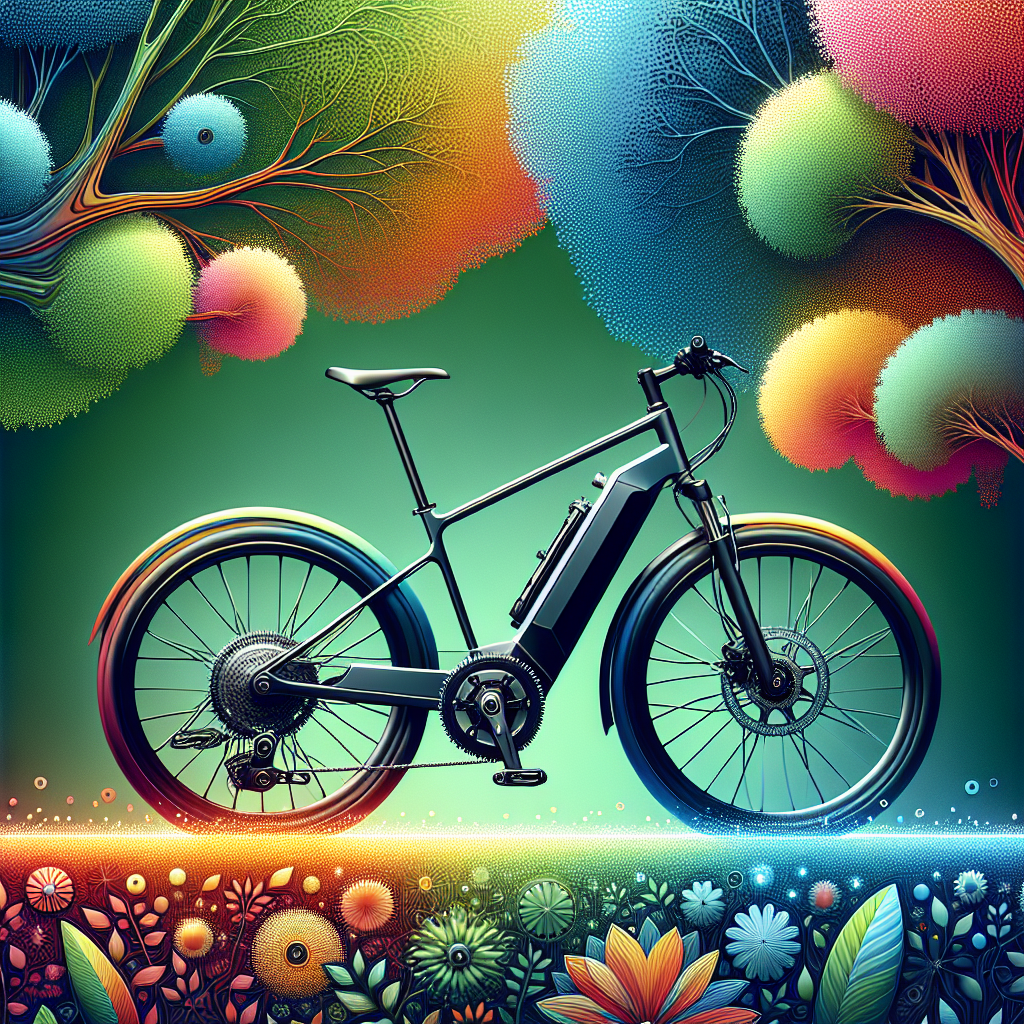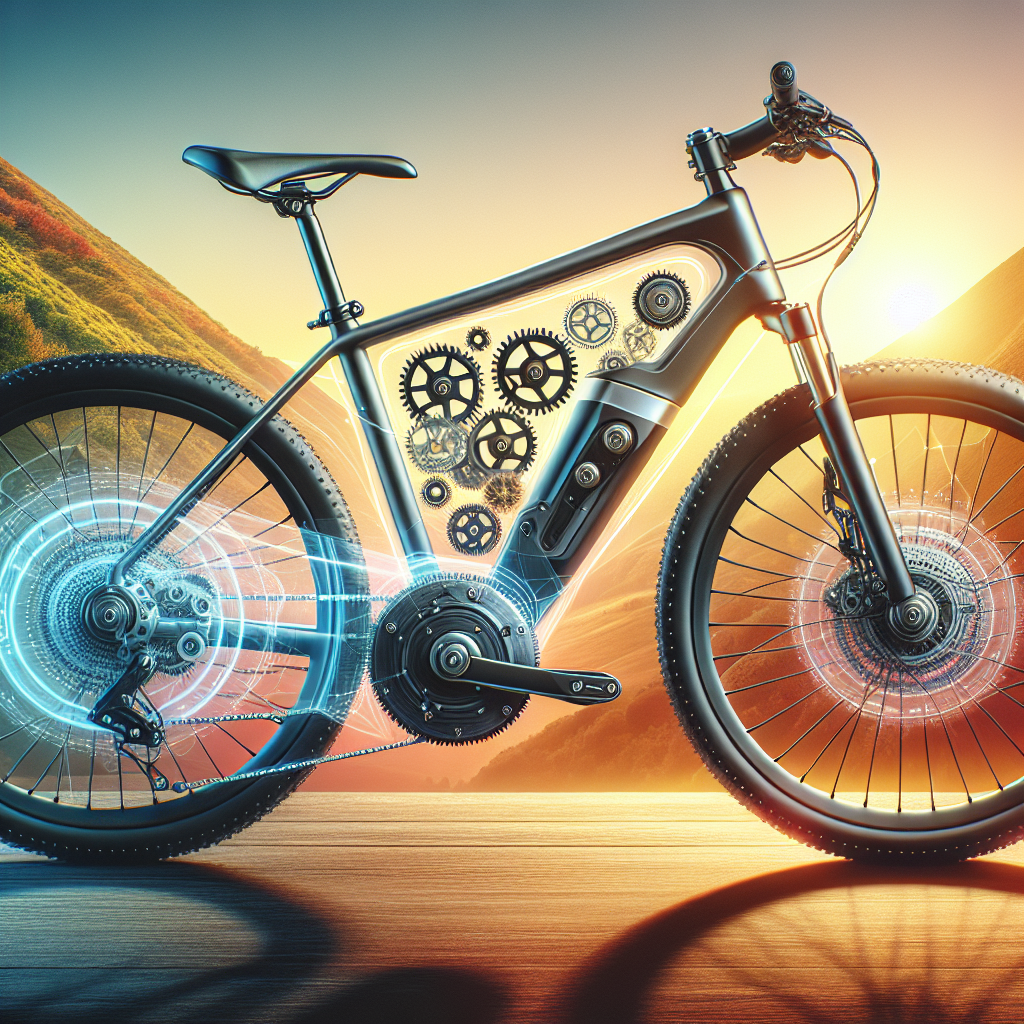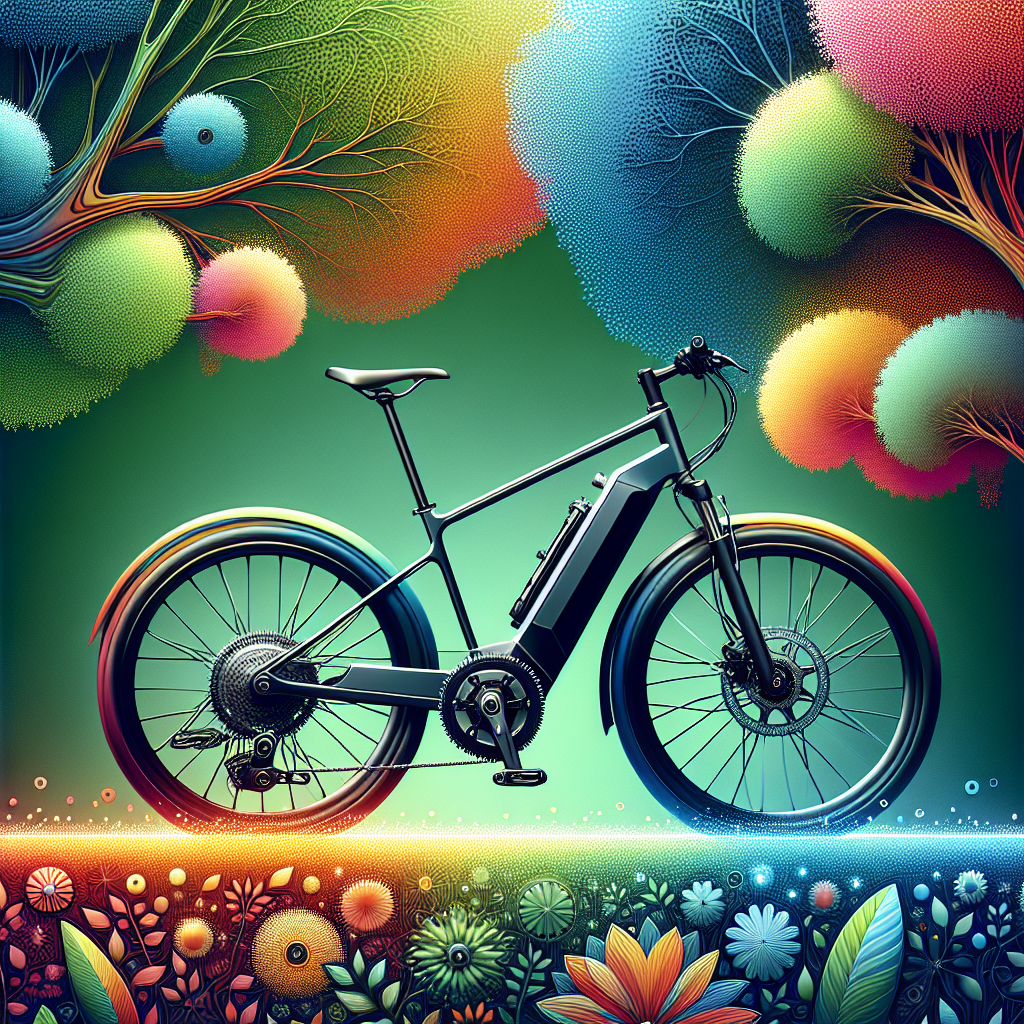In the world of cycling, e-bikes have gained immense popularity due to their electric-powered assistance. But have you ever wondered if these modern marvels operate with gears similar to regular bicycles? While e-bikes may seem like a whole new breed of two-wheelers, they actually do incorporate gears just like their traditional counterparts. In this article, we will explore the fascinating world of e-bike gears, discovering how they work and why they are an essential component in enhancing your cycling experience. So, hop on and prepare to delve into the world of e-bike gears!
Types of e-bikes
Pedal-assist e-bikes
Pedal-assist e-bikes, also known as pedelecs, are the most common type of e-bike on the market. As the name suggests, these bikes provide assistance when pedaling. They are equipped with a motor that kicks in as soon as you start pedaling, providing an extra boost to your efforts. The level of assistance can usually be adjusted, allowing you to choose how much help you want from the motor. Pedal-assist e-bikes are a great option for those who still want to get some exercise while enjoying the benefits of electric assistance.
Throttle-controlled e-bikes
Throttle-controlled e-bikes, on the other hand, do not require you to pedal in order to receive assistance. These bikes are equipped with a throttle that allows you to control the speed and power of the motor with a simple twist of the handle. This makes throttle-controlled e-bikes more similar to motorcycles or scooters in terms of their operation. They are often favored by riders who don’t want to put in much physical effort or who may have mobility issues that make pedaling difficult.
Hybrid e-bikes
Hybrid e-bikes, as the name suggests, are a combination of pedal-assist and throttle-controlled e-bikes. They allow riders to switch between pedal-assist mode and throttle mode, giving them the flexibility to choose the level of assistance that best suits their needs in any given situation. Hybrid e-bikes offer the best of both worlds, providing the convenience and ease of use of throttle mode when needed, while still allowing for a traditional cycling experience with pedal-assist mode.
Gearing mechanisms in e-bikes
Hub gears
Hub gears, also known as internal hub gears, are a common type of gearing system used in e-bikes. In this system, the gears are enclosed within the hub of the rear wheel. Hub gears offer a range of gear ratios that can be changed easily, even when the bike is stationary. This makes them a popular choice for riders who prefer simplicity and low maintenance. Hub gears are also more resistant to damage from external factors such as dirt, making them suitable for various terrains and weather conditions.
Derailleur gears
Derailleur gears, also known as external gears, are the most common type of gearing system found in traditional bicycles. They consist of multiple gears on the rear wheel, with a derailleur mechanism that moves the chain between them. Derailleur gears offer a wide range of gear ratios, which makes them suitable for riders who enjoy tackling a variety of terrains. However, they require more frequent maintenance and adjustment compared to hub gears, as they are exposed to the elements and can be more susceptible to dirt and damage.
Internal geared hubs
Internal geared hubs are another type of gearing system used in e-bikes. Similar to hub gears, the gears in internal geared hubs are enclosed within the hub of the rear wheel. However, internal geared hubs offer a wider range of gear ratios compared to hub gears, providing more versatility for riders. They are also known for their durability and low maintenance requirements, making them a popular choice for e-bike riders who want a reliable and hassle-free gear system.
CVT systems
Continuously Variable Transmission (CVT) systems are a relatively new development in e-bike gearing. Unlike traditional gearing systems, which offer discrete gear ratios, CVT systems provide a smooth and seamless transition between gears. This means that you can adjust the gear ratio infinitely, allowing for a greater degree of customization and fine-tuning. CVT systems are often praised for their efficiency and ease of use, as there is no need to anticipate gear changes or worry about shifting at the wrong moment.

Pros and cons of different gearing systems
Hub gears: Pros
- Easy to use and maintain
- Suitable for various terrains and weather conditions
- Provides reliable and consistent shifting
- Offers a good range of gear ratios
- Less susceptible to dirt and damage compared to derailleur gears
Hub gears: Cons
- Limited gear range compared to derailleur gears
- Slightly heavier than derailleur gears
- Can be more expensive to repair or replace if damaged
Derailleur gears: Pros
- Wide range of gear ratios for tackling different terrains
- Lighter weight compared to hub gears
- Can be more cost-effective for initial purchase
Derailleur gears: Cons
- Requires more frequent maintenance and adjustment
- More vulnerable to dirt and damage
- Can be more complex to use and learn for beginners
Internal geared hubs: Pros
- Wide range of gear ratios for versatile riding
- Low maintenance requirements
- Durable and reliable
- Suitable for various terrains and weather conditions
Internal geared hubs: Cons
- Limited gear range compared to derailleur gears
- Slightly heavier than derailleur gears
- May be more expensive to repair or replace if damaged
CVT systems: Pros
- Infinitely adjustable gear ratios for fine-tuning
- Smooth and seamless shifting experience
- Easy to use and maintain
- Offers a good range of gear ratios
CVT systems: Cons
- Relatively new technology with limited availability and options
- May have a learning curve for some riders
Factors to consider when choosing e-bike gears
When choosing gears for your e-bike, there are several factors to consider:
Terrain and riding style
Consider the type of terrain you will be riding on and your preferred riding style. If you’ll be tackling steep hills or off-road trails, you may need a wider range of gear ratios to ensure you can handle the varying gradients. On the other hand, if you’ll be primarily riding on flat surfaces or city streets, a more limited gear range may be sufficient.
Motor power and assist level
The power of your e-bike’s motor and the level of assist it provides can also influence your choice of gears. A more powerful motor may allow you to use a higher gear ratio and maintain a faster speed, while a lower assist level might require lower gears to make pedaling more manageable. Consider how the gears will work in conjunction with your motor’s capabilities to ensure optimal performance and efficiency.
Maintenance and durability
Different gearing systems have varying maintenance requirements and levels of durability. If you prefer a low-maintenance option, hub gears or internal geared hubs may be more suitable, as they are generally more resistant to dirt and damage. However, if you’re comfortable with regular maintenance and enjoy the versatility of a wide gear range, derailleur gears may be a better fit.
Budget
Lastly, consider your budget when choosing e-bike gears. The cost of different gearing systems can vary, with hub gears and internal geared hubs typically being more expensive compared to derailleur gears. Take into account the initial cost, as well as any potential maintenance or repair costs when making your decision.

Importance of gears in e-bikes
Gears play a crucial role in the performance and functionality of e-bikes. Here are a few key reasons why gears are important:
Efficiency and power transfer
Gears allow you to optimize the efficiency of your pedaling and transfer power from your legs to the wheels more effectively. By adjusting the gear ratio, you can find the perfect balance between pedaling effort and speed, making your ride more efficient and energy-saving.
Riding comfort and ease
The ability to switch between different gear ratios allows you to adapt to changing riding conditions, such as inclines or headwinds, with ease. Having the right gear ratio can make pedaling more comfortable and reduce strain on your legs, especially when tackling challenging terrain or when riding for long distances.
Versatility and adaptability
Gears provide versatility and adaptability to different riding situations. Whether you’re climbing steep hills, cruising on flat roads, or sprinting on open stretches, having a range of gear ratios enables you to adapt your pedaling effort to suit the required speed and effort. This allows you to tailor your ride to your personal preferences and optimize your performance.
Comparison to regular bicycles
While e-bike gears function similarly to gears on regular bicycles, there are a few key differences to note.
Similarities between e-bike gears and regular bike gears
Both e-bike gears and regular bike gears allow riders to adjust their pedaling effort and speed by changing the gear ratio. This allows for efficient and comfortable riding, regardless of the type of bike being used. Gearing systems in both types of bikes can be categorized into hub gears, derailleur gears, and internal geared hubs.
Differences between e-bike gears and regular bike gears
One major difference is that e-bike gears often have a wider gear range compared to regular bike gears. This is to accommodate the higher speeds and heavier weight of e-bikes. Additionally, e-bike gears are designed to handle the extra power and torque provided by the electric motor, which regular bike gears do not need to account for.
Understanding gear ratios
Gear ratios play a crucial role in determining how your e-bike performs in different riding conditions. Here’s a brief explanation of gear ratios in both e-bikes and regular bicycles.
Gear ratios in e-bikes
The gear ratio of an e-bike is the relationship between the number of teeth on the chainring (attached to the pedals) and the number of teeth on the rear cog (attached to the rear wheel). A higher gear ratio, such as 3:1, means that each revolution of the pedals results in more revolutions of the rear wheel, providing a higher speed. Conversely, a lower gear ratio, such as 1:3, allows for more torque and easier pedaling up steep inclines.
Gear ratios in regular bicycles
Regular bicycles also have gear ratios that determine the relationship between the front chainring and rear cog. However, the gear ratios in regular bicycles are usually higher than those in e-bikes, as they rely solely on human power. The gear ratios in regular bicycles are typically optimized for efficient pedaling and maximizing speed on flat or rolling terrain, rather than accommodating the extra power of an electric motor.
Common misconceptions about e-bike gears
There are a couple of common misconceptions surrounding e-bike gears that are important to address.
E-bikes always have more gears than regular bicycles
While many e-bikes do come equipped with multiple gears, it is not always the case that they have more gears than regular bicycles. The number of gears on an e-bike can vary depending on the specific model and brand. Some e-bikes may have fewer gears to offer a more streamlined and straightforward riding experience, while others may have a wide range of gear options to cater to different riding styles and terrains. The number of gears on an e-bike is not necessarily an indication of its performance or capabilities.
The number of gears determines the performance of an e-bike
The performance of an e-bike is influenced by a variety of factors, including the power of the motor, battery capacity, weight distribution, and overall design. While having multiple gears can certainly enhance the versatility and adaptability of an e-bike, it is not the sole determinant of its performance. A well-designed and properly matched gearing system to the e-bike’s motor and riding style can significantly enhance your riding experience, regardless of the number of gears.
Tips for optimizing gear usage on e-bikes
To get the most out of your e-bike gears and enhance your riding experience, consider the following tips:
Experiment with different gear combinations
Don’t be afraid to experiment with different gear combinations to find what works best for you. Pay attention to how the gear ratio affects your pedaling effort, speed, and overall comfort. By trying out different gear ratios in varying riding conditions, you can find the optimal combination that maximizes your riding efficiency and enjoyment.
Anticipate gear changes in advance
When approaching a hill or terrain change, anticipate the necessary gear change in advance. By shifting to a lower gear before you start climbing, you can smoothly transition into the incline without putting excessive strain on your legs or the motor. Anticipating gear changes will allow for a more controlled and efficient ride, especially when riding with a pedal-assist e-bike.
Avoid excessive shifting
While it’s important to find the right gear for the terrain, try to avoid excessive shifting. Constantly shifting gears can disrupt your cadence and waste energy. Instead, focus on maintaining a smooth and consistent pedaling motion, only shifting when necessary or when you need to fine-tune your effort. This will help you maintain a steady rhythm and maximize your efficiency.
Maintain and regularly service gears
To ensure optimal performance and longevity of your e-bike gears, it’s essential to maintain and regularly service them. Keep your gears clean, lubricated, and properly adjusted. Regularly inspect the teeth of the chainring and rear cog for wear and replace them if necessary. By taking good care of your gears, you can extend their lifespan and prevent any potential issues that may arise from neglect or improper maintenance.
Conclusion
E-bike gears are an essential component that greatly enhances the performance, comfort, and versatility of electric bicycles. The choice of gearing system, from hub gears to derailleur gears and internal geared hubs, depends on various factors such as terrain, riding style, maintenance preferences, and budget. Regardless of the type of e-bike you choose, understanding how gears work and utilizing them effectively will allow you to optimize your riding experience and take full advantage of the benefits that e-bikes have to offer. So, get out there, experiment with different gear ratios, and enjoy the effortless and exhilarating ride of your e-bike!

